Growth factors and cytokines for neural stem cell research
Qkine is committed to manufacturing enhanced-quality bioactive proteins to improve scientific outcomes and reproducibility. We provide a complete portfolio of animal-origin free and carrier protein-free growth factors and cytokines for neural stem cell culture.
Neuroscience includes several areas of research such as molecular and cellular neuroscience, neurooncology, and developmental neuroscience. It seeks to understand the function or development of the nervous system in healthy conditions and in neurodegenerative diseases, neurological and psychiatric disorders, and brain cancer.
Although the field of neuroscience has made significant advancements in recent years, shedding light on many aspects of brain function, it is still challenged by the complexity of neural tissue and the availability of model systems. Advances in stem cell research have provided better models of the unique features of the brain using human induced pluripotent stem cells (hiPSCs). hiPSCs can be differentiated into many neural and glial cell types including cortical or dopaminergic neurons, astrocytes, and microglia. More complex 3D modelling using brain organoids can be generated to better recapitulate the environment of the brain and to study the cell-cell and cell-matrix interactions.
High-quality growth factors are essential for developing and maintaining robust, reproducible, and physiologically relevant neural cultures. Growth factors developed in an animal-free expression system have a higher lot-to-lot consistency and fewer contamination risks from viruses, prions, and other animal-derived ingredients. All growth factors and cytokines from Qkine pass stringent biochemical and bioactivity quality control testing, ensuring you complete confidence in the reagents for your neural stem cell cultures.
Growth factors for neural stem cell culture
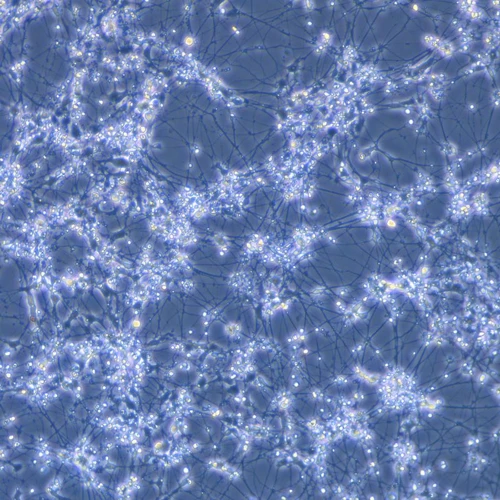
Neural induction and maintenance
Recombinant human BDNF protein (Qk050) Recombinant human betacellulin (Qk123) Recombinant human EGF protein (Qk011) Recombinant human FGF-2 (145 aa) protein (Qk025) Recombinant human FGF-2 (154 aa) protein (Qk027) Recombinant FGF2-G3 (145 aa) protein (Qk052) Recombinant FGF2-G3 (154 aa) protein (Qk053) Recombinant human noggin protein (Qk034) Recombinant human VEGF 165 protein (Qk048) Dopaminergic neuron differentiation kit (Qk517)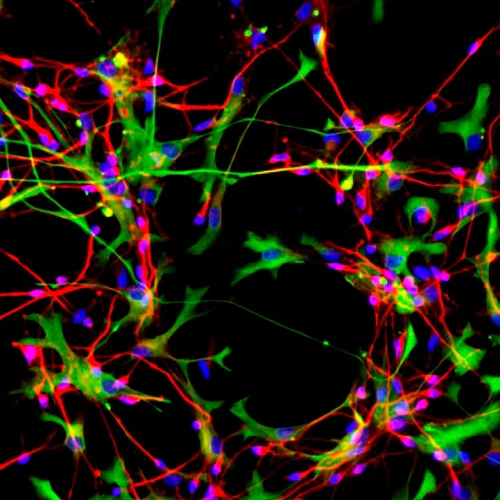
Neural differentiation and maturation
Recombinant human BDNF protein (Qk050) Recombinant human BMP-2 protein (Qk007) Recombinant mouse EGF protein (Qk066) Recombinant human FGF-8a protein (Qk059) Recombinant human FGF-8b protein (Qk057) Recombinant human GDNF protein (Qk051) Recombinant human IGF-1 protein (Qk047) Recombinant human IGF-2 protein (Qk118) Recombinant human NT-3 protein (Qk058) Recombinant human Shh protein (Qk055) Recombinant human TGF-β3 protein (Qk054) Dopaminergic neuron differentiation kit (Qk517)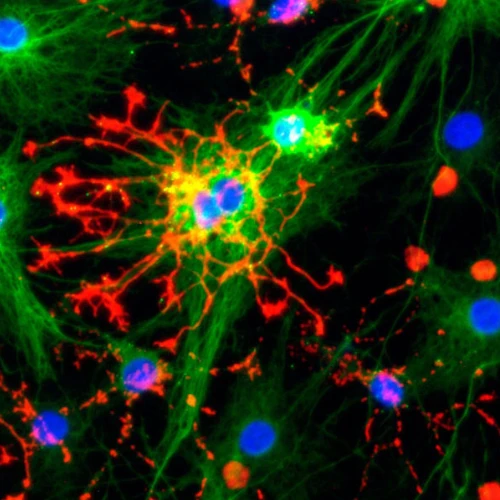
Glial differentiation and maturation
Recombinant human activin A protein (Qk001) Recombinant human BMP-2 protein (Qk007) Recombinant human BMP-4 protein (Qk038) Recombinant human CNTF protein (Qk063) Recombinant human EGF protein (Qk011) Recombinant human GDNF protein (Qk051) Recombinant human IGF-1 protein (Qk047) Recombinant human IL-34 PLUS™ protein (Qk091) Recombinant human LIF protein (Qk036) Recombinant mouse LIF protein (Qk018) Recombinant human NRG-1 protein (Qk045) Recombinant human PDGF-AA protein (Qk043) Recombinant human PDGF-BB protein (Qk044)Resources
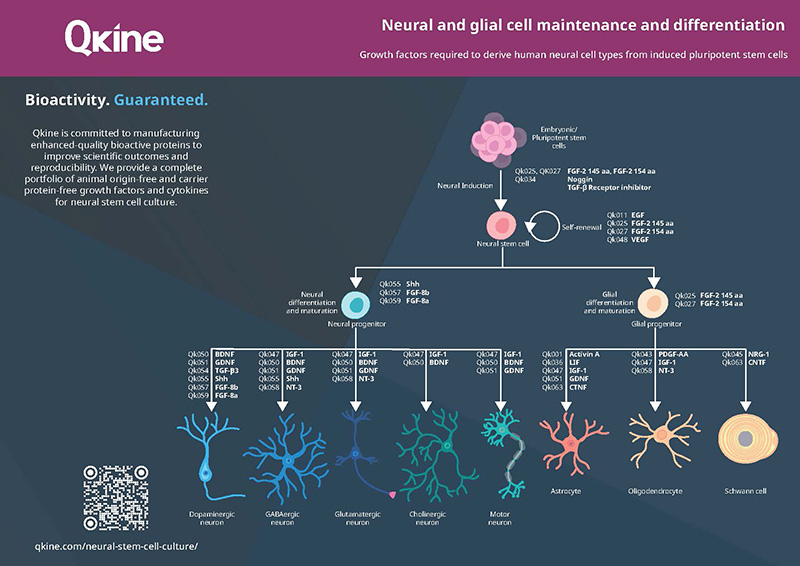
Poster: Growth factors for neural and glial cell maintenance and differentiation
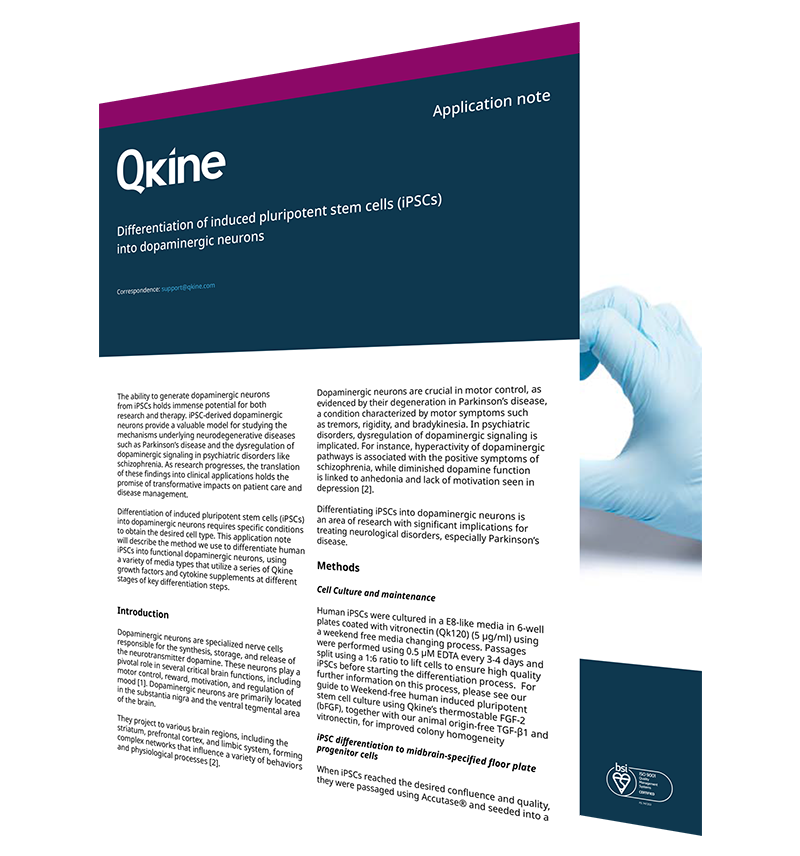
Application note: Differentiation of induced pluripotent stem cells (iPSCs) into dopaminergic neurons
This application note describes the method we use to differentiate human iPSCs into functional dopaminergic neurons, using a variety of media types that utilize a series of Qkine growth factors; FGF8a (Qk059), BDNF (Qk050), GDNF (Qk051) and TGF-ß3 (Qk054) at different stages of key differentiation steps.
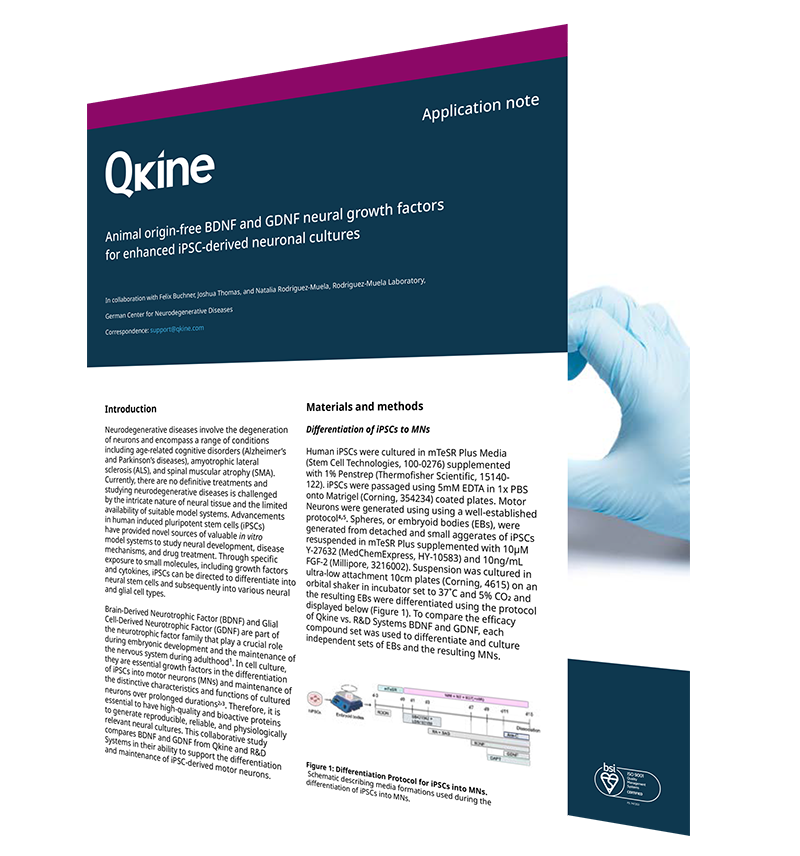
Application note: Animal origin-free BDNF and GDNF neural growth factors for enhanced iPSC-derived neuronal cultures
This collaborative study compares BDNF (Qk050) and GDNF (Qk051) from Qkine and R&D Systems in their ability to support the differentiation and maintenance of iPSC-derived motor neurons.
Recent publications
Proximity proteomics of primary cilia in human hypothalamic neurons
Macarelli V, Sroka TJ, Hansen JN, Axelsson U, Mick DU and Merkle FT
From the lab of Florian T. Merkle, University of Cambridge, UK
Featuring Qkine BDNF (Qk050)
Synchronous 3D patterning of diverse CNS progenitors generates motor neurons of broad axial identity
Buchner F, Dokuzluoglu Z, Thomas J et al.
From the lab of Dr. Natalia Rodriguez-Muela, German Center for Neurodegenerative Diseases e.V. (DZNE)
Parkinson’s associated protein DJ-1 regulates intercellular communication via extracellular vesicles in oxidative stress
Page T, Musi CA, Bakker SE et al.
From the lab of Mariaelena Repici, Aston University
Animal origin-free growth factors for neural stem cell research
Our science team is here to help, please contact us if you have any questions.